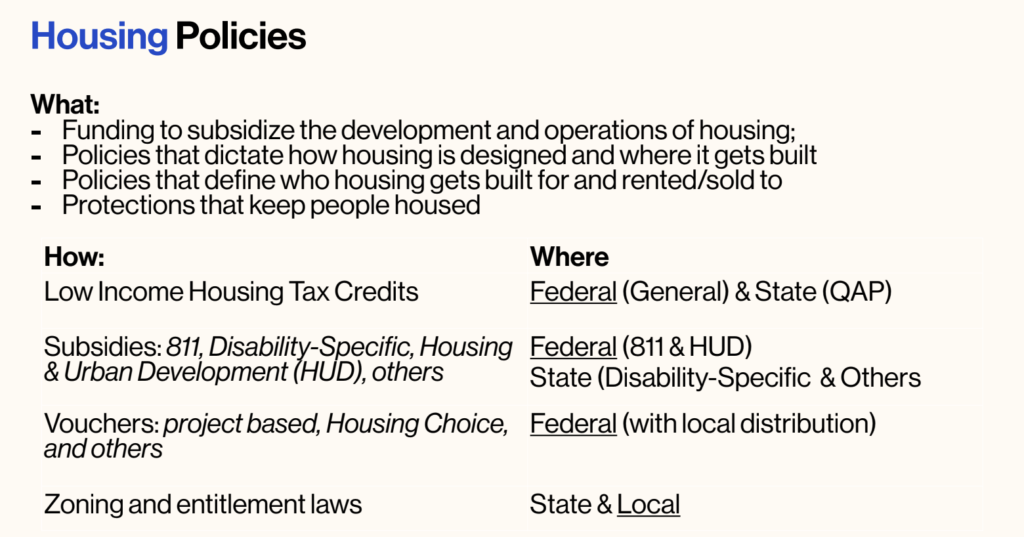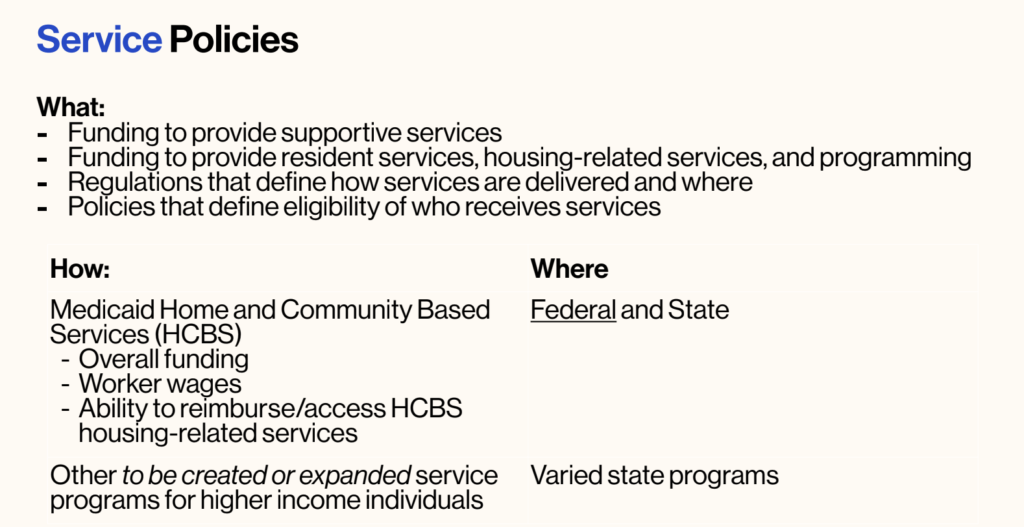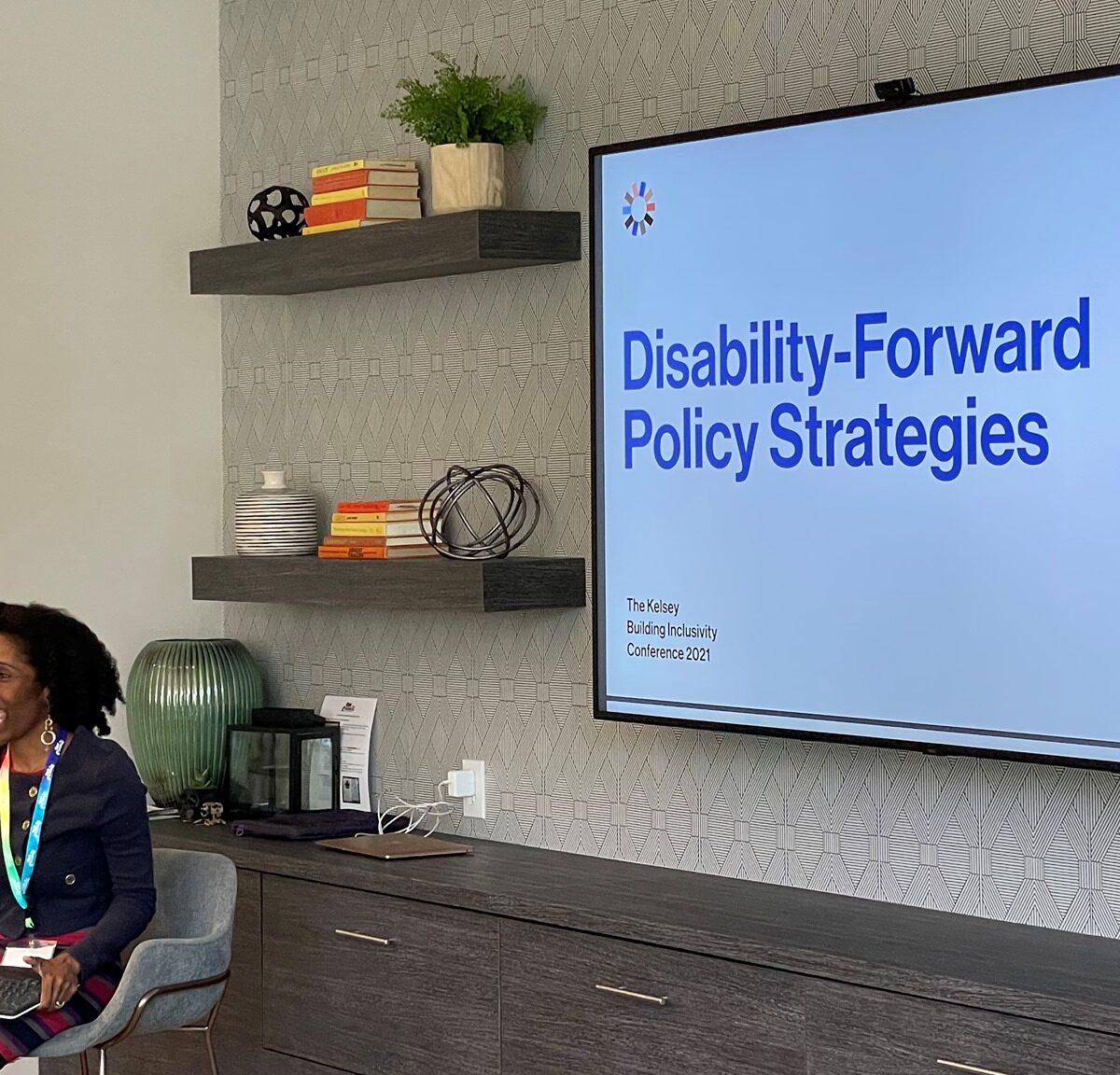This is part of a Building Inclusivity series, from a 2021 convening with national organizations working at the intersection of housing and disability. For this article, this glossary of terms may be helpful in defining some words used.
Understanding policy frameworks and advocacy strategies can ultimately make us stronger housing advocates for disability-forward solutions. In driving policy change through advocacy there is a diversity of needed policy changes and a diversity of governmental entities where those policy impacts can be made. As a movement or field of leaders seeking to improve disability housing, it is of the utmost importance that we understand our advocacy audience and are unified on what we ask for in those spaces.
Powerful advocacy involves being crystal clear on three things:
- What change or interventions you are asking for
- How those changes will happen
- Where those changes can be made or who makes those changes
Knowing the true questions behind these questions is the key to unlocking real power in advocacy.
What
When we think about community living for people with disabilities, policies or the “what” are needed in two primary arenas: housing and supportive services. To explore this more, reference the ‘Triangle of Community Living’. To affirm the right of people with disabilities to live in the community of their choice, interventions are needed that both support housing access and access to services and support. Housing in a disability-forward context means affordable, accessible, inclusive and integrated within the community. Services are individualized to someone’s unique needs, including but not limited to in-home support, healthcare, employment services, transportation and therapies. Preferences around the type of housing and level or kind of services and individual desires will vary and should allow for choice.
This triangle of community living framework is one that individuals can apply to their own housing developments, and one we use at The Kelsey. It can also be used to help define policy interventions and advocacy strategies to support a disability-forward housing future. To support community living for people with disabilities we need policies that support both housing and services for individuals.
When we think about housing policies for disabled people and what kinds of change we seek, we can categorize thinking about affordability, accessibility, and inclusivity. Affordability focuses on people’s ability to pay rent within their income, including extremely low income. Accessibility thinks about physical spaces, the build environment, and how spaces are designed to support cross-disability access. Inclusivity is about ensuring people can live in integrated, community-based settings not congregate or institutional ones. Housing policies can support a combination of these three goals or focus on one specifically.
How
Lever pulling can be thought of as “the means through which change will happen” or simply “how” change will happen. There are a variety of different levers that impact both housing and supportive services and the levers are different for each. These levers can be translated into specific policy areas that support housing or supportive service access for people with disabilities.
Housing interventions make new housing options available to people with disabilities and can include things like:
- financing to support new housing developments that are affordable, accessible, and inclusive and specifically to meet deepest affordability for people who rely on fixed income like SSI
- rental assistance for people with disabilities, either for projects that are disability inclusive or for the individuals themselves
- building design guidelines and accessibility requirements
- zoning laws and requirements that dictate where and what kind of housing gets built, and incentivize or require disability inclusion
- Incentives that make it easier to build disability-forward housing like financing, or improved zoning, or design benefits
All of these, and more, are the kinds of policies advocates can work on to increase housing options for people with disabilities. More on housing policies can be found in here.
Supportive services policies are things that increase or improve services for people with disabilities including:
- Expanding access or removing waitlists for Home and Community-Based Services (HCBS), Medicaid-funded services that support people to receive services where they want to live and not in an institution
- Higher payment of service workers and home care providers
- Creating programs that give disabled people more choice about what services they receive and from whom
- Allowing people to use their service funds (Medicaid) to pay for housing-related services like housing navigation, access, and retention
Where
It’s important to know the audience for a given proposed policy change and direct your advocacy at those individuals. The “where” in this framework refers to “who makes those changes or where interventions happen” in terms of Local, State, or Federal jurisdiction. In the example above with HUD and HCBS, both governmental entities are federal and handled on a national level. Conversely, zoning regulations or land use policies are almost always local. Depending on the change you seek, your audience will likely change.
Having a clear understanding of what change you seek and how that change can be implemented is the important first step key. Then it is critical to know who pulls those levers where.


For example, if your focus is increasing housing supply that is designed to be accessible for people with disabilities, you may focus on zoning laws and advocate within a city or county for an ordinance that lets projects who meet certain accessibility requirements build higher or be approved faster.
- What: Create local ordinance that increases allowable density for the most accessibly designed buildings
- How: Zoning Laws
- Where: Local
Focusing on services, you may want to support people who are living in nursing homes to be able to move into the community and advocate for expansion of Money Follows the Person where individuals can take their service dollars to live where they choose without losing any services.
- What: Increase funding and expand program to allow individuals to return to the community from nursing homes
- How: Money Follows the Person program
- Where: Medicaid (Federal)
The “what”, “how”, “where” framework can be applied across many policy strategies beyond the two above. Once you’re clear on those, you and your allies can work on the specific advocacy strategies to make that change a reality.
Policy frameworks and strategies are a critical part of creating a disability-forward housing future. Knowing and having the answers ready to the “what” “how” and “where” questions creates an opportunity to be in powerful unison with other advocates seeking policy change. Lobbying for policy change using this framework along with a shared policy agenda ensures that we are asking for the same change, by the same means, from the same body of policymakers. Advocates, it’s time to organize our shared policy agenda and claim the power that unity will undoubtedly bring.

